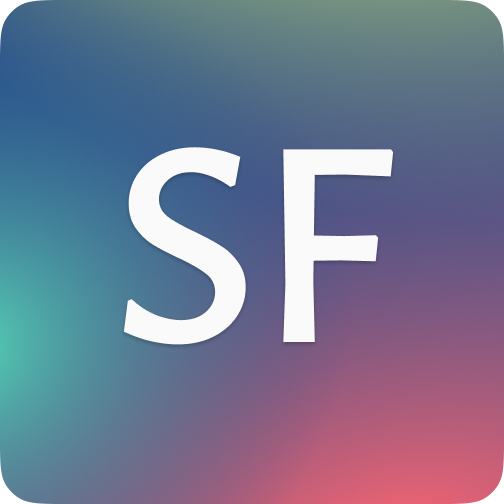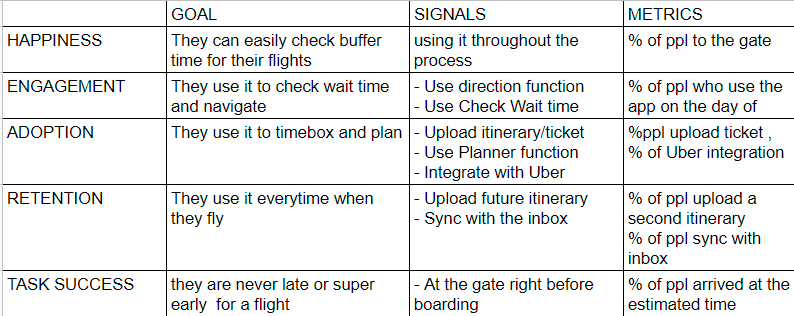Problem statement definition (STBP 3/7)
After creating the customer journey map, key problems for my users became more apparent. Here’s how i narrowed down the scope.
Problem Statement
Who, What, Why: Frequent business travellers are frustrated with wasting time because they don’t know the minimum buffer time they need in order to not miss their flights.
Design Direction
Based on the problem statement, I decided to design an experience that helps users know how much buffer time they need and not miss their flights.
For the V1 of this experience, functionally, users need to be able to:
Know when to head to the airport based on their preference
See flight status in real-time
Navigate to/in the airport easily
From an AR perspective, users need to be able to:
Give commands without using their hands
view information easily when moving around
Measuring success
I applied Google’s HEART metrics framework to help measure the experience.
MVP Scope
Based on the needs of this experience, I came up with a list of product features:
Itinerary set up
Wait time preference scale
Traffic tracker
Uber integration
Reminder
Notification
Navigation
Because this is an AR experience with AR glasses, I also defined a set of important UX capabilities:
Auto-minimize
Gaze to expand
Gestures to manipulate and input commands
Auto adjust angle and distance to follow the user


